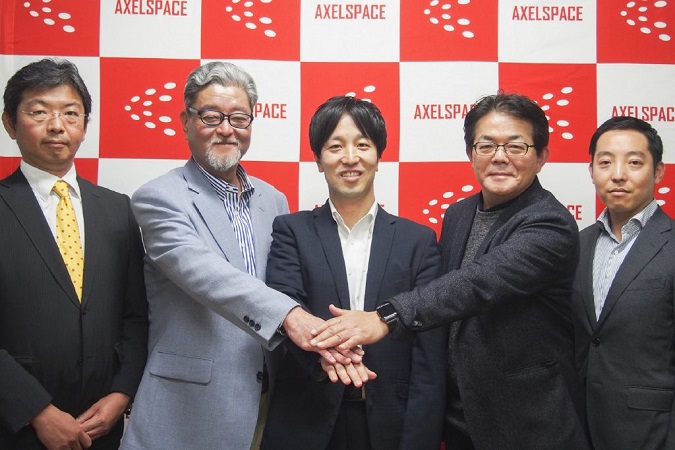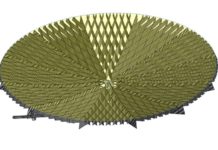Axelspace, a Japanese space startup developing its own Earth imaging satellites, has raised 2.58 billion JPY (US$22.8 mlllion) in its Series B funding round. The funds will be used to develop and launch 2 proprietary microsatellites by 2020.
The round sees the allocation of new shares to lead investor 31VENTURES – Global Brain – Growth I Joint Venture (managed by Mitsui Fudosan Co. Ltd. and Global Brain Corporation) and to several other venture capital and corporate investors, including the government-backed Innovation Network Corporation of Japan (INCJ). As part of the round, the company has undergone restructuring, and will also collaborate on a large-scale project with investor Mitsui Fudosan.
Axelspace’s Series A took place in 2015, where it raised US$15m. So far, the company has launched three Earth observation satellites – WNISAT-1 (10kg, launched in 2013 and currently in extended operation in orbit); WNITSAT-1R (43kg, launched in 2017 and currently operational); and Hodoyoshi-1 (60kg, launched in 2014, and currently operational), developed in cooperation with the Next-generation Space Systems Technology Research Association (NESTRA).
Axelspace’s business and the Axelglobe constellation
Axelspace’s business was originally funded not through investment, but through revenues – its two WNISAT satellites were developed for Japan’s Weathernews Inc.,which needed satellite imagery for its weather service business. Besides developing private, dedicated satellites for clients, Axelspace aims to build an Earth observation constellation known as Axelglobe, which will consist of <100kg microsatellites, each with a 2.5m ground resolution. Axelspace has not determined the exact the number of satellites for the constellation, but might launch up to 50 satellites to target a global daily revisit rate. The Series B funding will be used to develop 2 operational satellites by 2020.
Launch of the first Axelglobe satellite & RAPIS-1 for JAXA
The satellites for the Axelglobe constellation are known as GRUS satellites, which the company has developed internally. The launch of the first GRUS satellite – which is also Japan’s first commercial Earth Observation satellite – is due to take place soon, on December 27, after having been postponed a year. GRUS-1 will be launched by the Soyuz-2 from Russia’s Vostochny Cosmodrome, into a 600km Sun Synchronous Orbit (SSO), and will serve as a demonstration satellite.
Following that, on January 17 2019, Axelspace’s RAPIS-1 satellite will be launched from Japan’s space agency JAXA’s Epsilon small launch vehicle. This is a satellite built specifically for JAXA, and is significant for being the first JAXA satellite to be developed by a startup.
Part of JAXA’s Innovative Satellite Technology Demonstration Program, the 200 kg satellite will be launched into a 500 km SSO, and carries seven experimental payloads. The JAXA program supporting this mission is meant to encourage space activities in Japan by providing a platform for private companies, universities and research institutes to test new components in space.
Partnership with JSAT & KSAT
Axelspace has also announced that it will use SKY Perfect JSAT (JSAT) and Kongsberg Satellite Services AS (KSAT)’s joint Ground Station Service for the upcoming GRUS satellite. The joint service, which is the result of a Strategic Alliance Agreement for LEO ground station services concluded in 2016, will support Axelglobe using KSATLite, a global ground network as a service and that is optimized for small satellites and big constellations. GRUS will utilize JSAT’s ground station at the Ibaraki Network Control Center as well as KSAT’s ground station in Svalbard.







